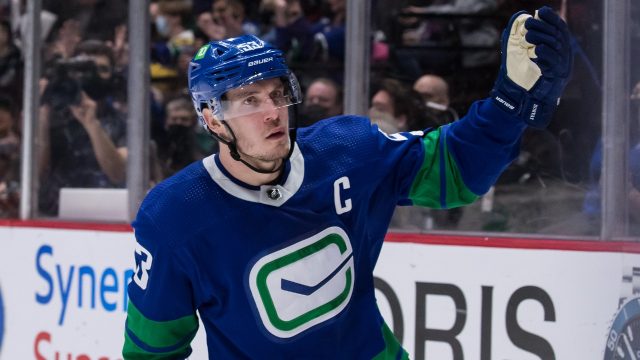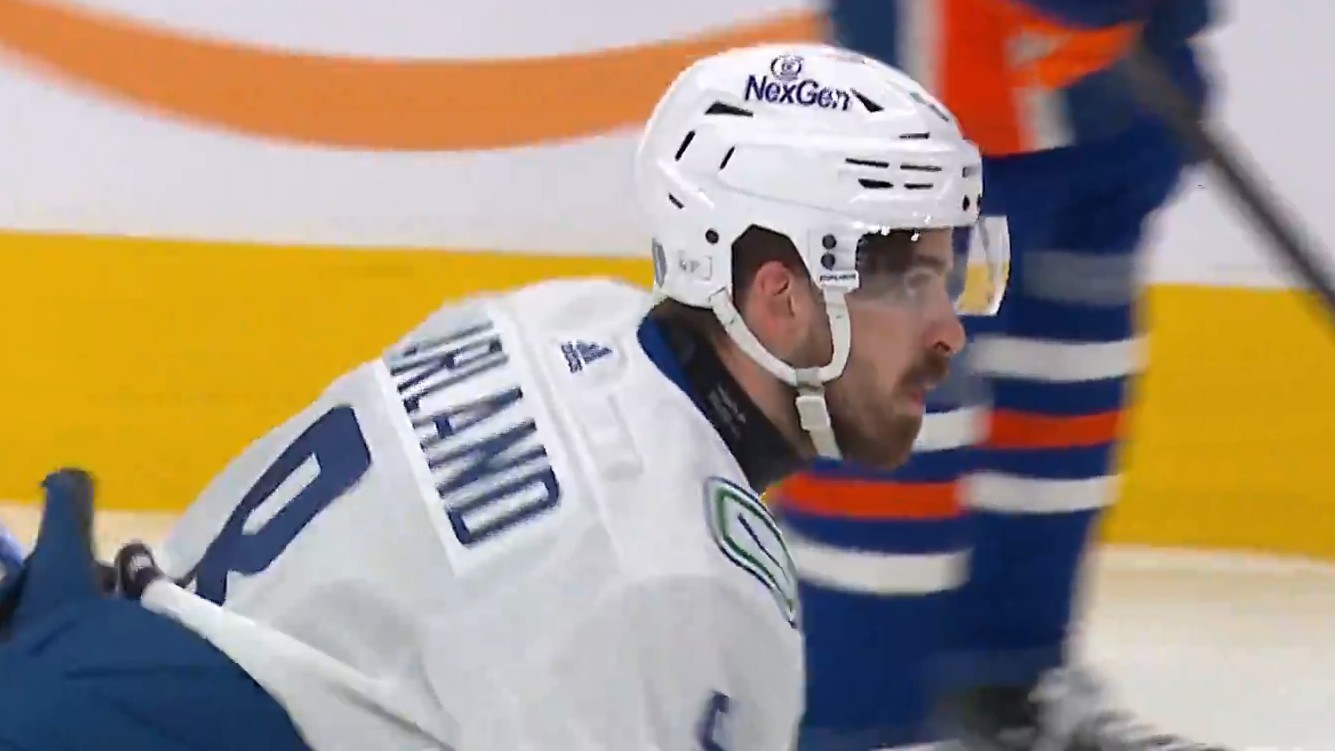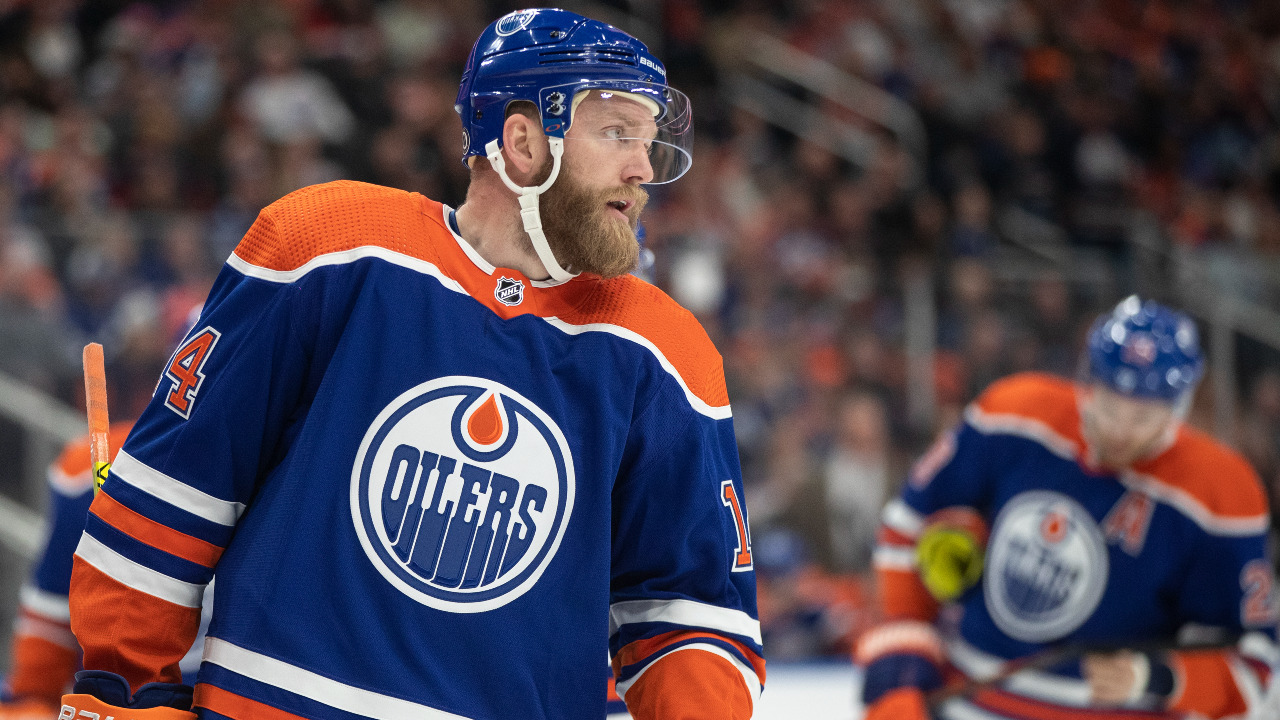
This message will self destruct in a few weeks.
Bold predictions are the type of exercise where you’re setting yourself up to fail. A prediction isn’t truly bold if most people anticipate it will happen, or consider it a guarantee. A bold prediction must be based in some kind of reality, but stretch the limits of what we’d agree is the most likely outcome.
So, as I wait to see how my pre-season 32 bold predictions all play out (some still good, some not so much), me and my crystal ball have been tapped once again to bend expectations and inflame a comment section.
Here are five bold NHL predictions to come in 2023…
Montreal makes a big splashy addition for the present
When the Christmas roster freeze ends this week and teams are allowed to trade once again, we’re bound to see the market heat up and have more names added to it. But that trade market is constipated by the flat cap. Sixteen NHL teams are in LTIR and 15 teams are listed as having less than $100,000 in projected cap space (according to CapFriendly). There are only so many teams that can be used as a third-party salary retainer, too, so there is some musical chairs going on here.
It’s possible this leads to an interesting dynamic: could there be any non-playoff, rebuilding teams (who do have cap space) who might enter as buyers instead of a salary retention go-between?
We saw the Columbus Blue Jackets make a big splash trade before they were really ready to launch into contention when they landed Patrik Laine a couple years ago, and then follow it up by signing Johnny Gaudreau off the UFA market. Could GM Jarmo Kekalainen try and add some more?
What about the Montreal Canadiens? We explored them as a potential trade destination for Bo Horvat, assuming Horvat signs an extension. The Habs have the cap room to sign him and the vast prospect pool to dip into without risking the future.
Another interesting factor to consider: if you added a player like Horvat now and re-signed him under the assumption the cap is rising by only $1 million next season, that AAV could wind up being a steal before the market starts to significantly shift in two and three years, when the cap could rise by another $7-8 million total.
The timing and market conditions might be just right for these also-rans to think about adding an impact player now. And the Canadiens would have the assets to get something done.
Connor McDavid or Tage Thompson score 50 goals in 50 games
There have been some truly special performances to start this season and McDavid and Thompson are some of the first to come to mind. While McDavid has created some elbow room at the top of the scoring race, Thompson has given us flashes of Mario Lemieux with a five-goal game and two six-point games.
Now, can they do something no other NHLer has done since Brett Hull in 1991-92?
As we sit here today, Thompson has 26 goals in 32 Sabres games; McDavid has 30 in 35 Oilers games. It will be a stretch to accomplish this, and will take an even better push through January than we’ve seen so far. But neither are terribly far off the pace needed to score 50 times in their teams’ first 50 games. They’ll get minutes and tons of power-play opportunities. It will take a few very special games, but this mark isn’t totally out of reach as we look at it today.
Goal averages fall below last season, but power-play percentages rise to historic rates
The start of this season brought a ton of goals, sagging save percentages, and this idea that we would keep trending closer to something resembling the high-flying ’80s (though ever fully recapturing that era might be a stretch).
And, yes, goals have been on the rise recently when compared to the earlier years of the salary cap era. Teams have combined to score over six goals per game in three of the past four seasons — the only other time that mark was reached was in 2004-05, fresh out of the lockout.
Here is a look at the top five offensive seasons of the salary cap era, per Hockey-Reference…
|
SEASON |
AVERAGE GOALS PER GAME |
|
2022-23* |
6.32 |
|
2021-22 |
6.28 |
|
2005-06 |
6.16 |
|
2019-20 |
6.04 |
|
2018-19 |
6.02 |
But the early-season openness has started to give way to slightly improved defence, which isn’t an unusual thing. It’s fairly common for goal scoring to decline as a season goes on, fatigue sets in, penalties are called less frequently and coaches game plan better. We’re seeing some of that here now. At one point in November, NHL teams were combining to average over 6.4 goals per game, a rate which hasn’t been accomplished in a full season since 1993-94. Today that average sits at 6.32 goals per game, just above last season’s 6.28. Even the league average save percentage has started to climb up a point or two.
So, as we go along, it wouldn’t be surprising to keep seeing that number dip. It probably won’t be to a sharp degree — and still should finish at a high scoring rate relative to this era — but could be enough to show that goal scoring actually declines a little this season compared to last.
One X-Factor as to how this plays out are the power-plays. Currently, power-play opportunities are being given out at a considerably higher rate than last season (3.27 per game vs. 2.89) and the success rates are among the highest in league history. If you go back to even just 2014-15, you’ll see seven teams had a power-play success rate over 20 per cent — today, 22 teams are over that number.
In fact, as it sits right now, six of the top 10 power-play percentages in the cap era are from teams in the 2022-23 season.
Right now, NHL teams are converting on 22.52 per cent of their power-plays. Last season that rate was 20.61, which was the highest since 1989-90. Only six times in NHL history has the league finished a season with power-play rates over 22 per cent — those happened in 1978-79, 1980-81, 1981-82, 1982-83, 1984-85 and 1985-86. If this trend continues, or even rises, it could help keep the overall goal rates up.
Auston Matthews signs for the new highest AAV in the league by a few million
It’s not at all bold to predict that Matthews will become the highest-paid NHL player by AAV on his next contract — it’s more a guarantee that Matthews will surpass Connor McDavid‘s $12.5-million AAV and Nathan MacKinnon’s $12.6-million AAV (which kicks in next season).
The real question is: by how much will he go over them?
Matthews has one more season left on his current contract, but can sign an extension as of July 1. By then, we’ll know for sure if next year’s salary cap (the upper limit Matthews would be negotiating within the context of) will rise by $1 million or more. But since Matthews’ extension wouldn’t actually begin until 2024-25 — when the cap could really begin to spike — there are important projections to keep in mind.
In October, we explored the many considerations that could go into Matthews’ next contract, which coincides with the presumed end of the COVID-induced flat cap. Considering all of that, not only is Matthews likely to become the new highest-paid player in the league, there is a case to be made for him to also chase becoming the first max-salary player in the league.
There is a world where Matthews doesn’t eclipse McDavid and MacKinnon by just a couple hundred thousand dollars on his AAV, but smashes past them by a few million.
Phil Kessel’s ironman streak comes to an end
He’s set the new record, and he’s become the only player ever to suit up for more than 1,000 consecutive games. It’s been a heck of a run for Phil Kessel, but 2023 feels like the year he’ll finally get sat down for a game or two.
The 35-year-old has just 13 points in 36 games this season, and his ice time has dipped below 10 minutes on five occasions. No other Golden Knights forward has been on the ice for more than Kessel’s 23 goals against at 5-on-5 and the Golden Knight have been outscored at a nearly 2:1 rate with him out there.
If not for a slew of injuries, perhaps Kessel may have already been asked to sit. But as (if?) Vegas gets healthier, stronger defensive players earn roles and a spot in the top-six becomes tighter to fit into, head coach Bruce Cassidy may have to make a call no other coach has in 12 years.





